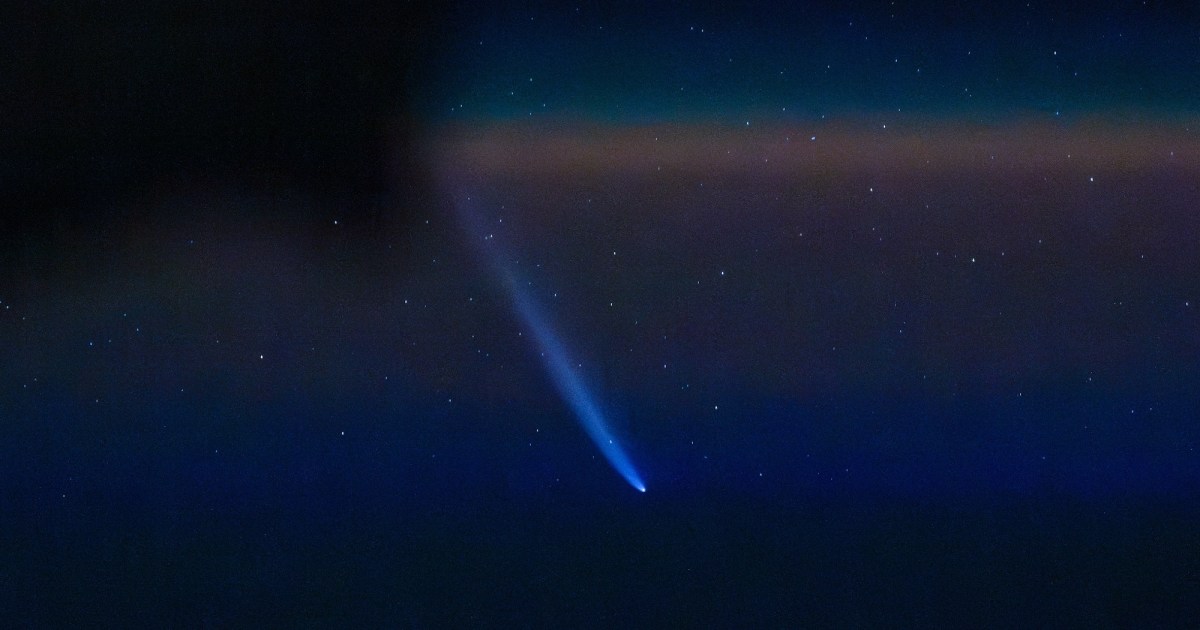Tech News
NASA’s latest skywatching tips include a comet and Europa

NASA’s Monthly Skywatching Tips for October 2024
NASA has released its latest update on celestial events to look forward to in the upcoming weeks. The space agency shared these tips in a video, which we have summarized below.
Planets Galore!
October presents a fantastic opportunity to observe many of the planets in our solar system. Here’s a quick guide on what you can see and the best times to look:
– Venus: Visible low in the west just after sunset and sets before full darkness.
– Saturn: Viewable towards the southeast after dark and sets by dawn.
– Mars: Rises around midnight and climbs high into the sky by dawn, appearing alongside Jupiter.
– Jupiter: Rises in the early part of the night, reaching its peak in the south before sunrise.
Europa Clipper Mission
NASA is set to launch the Europa Clipper mission to explore Jupiter’s moon, Europa, as early as October 10. This mission aims to study Europa’s potential ocean beneath its icy surface, with the goal of understanding its habitability.
On October 11 and 25, you can use a telescope or binoculars to observe Europa alongside Jupiter, marking the beginning of this exciting mission.
Moon-and-Planet Pair-Ups
Keep an eye out for moon-and-planet pairings this month, with the moon appearing close to Saturn on the 13th and 14th, Jupiter on the 20th, and Mars on the 23rd and 24th.
Comet Tsuchinshan-ATLAS
This month offers a unique opportunity to witness Comet Tsuchinshan-ATLAS, potentially the brightest comet of the year. Visible low in the western sky after twilight, the comet will rise higher each evening, providing viewing opportunities throughout the month.
While predictions on its brightness are uncertain, there’s a chance it could become visible to the naked eye, making it a must-see celestial event.
Stay tuned for more updates on October’s skywatching events from NASA!
-

 Destination8 months ago
Destination8 months agoSingapore Airlines CEO set to join board of Air India, BA News, BA
-

 Breaking News10 months ago
Breaking News10 months agoCroatia to reintroduce compulsory military draft as regional tensions soar
-

 Gadgets3 months ago
Gadgets3 months agoSupernatural Season 16 Revival News, Cast, Plot and Release Date
-

 Tech News12 months ago
Tech News12 months agoBangladeshi police agents accused of selling citizens’ personal information on Telegram
-

 Productivity11 months ago
Productivity11 months agoHow Your Contact Center Can Become A Customer Engagement Center
-

 Gadgets4 weeks ago
Gadgets4 weeks agoFallout Season 2 Potential Release Date, Cast, Plot and News
-

 Breaking News10 months ago
Breaking News10 months agoBangladesh crisis: Refaat Ahmed sworn in as Bangladesh’s new chief justice
-

 Toys12 months ago
Toys12 months ago15 of the Best Trike & Tricycles Mums Recommend























